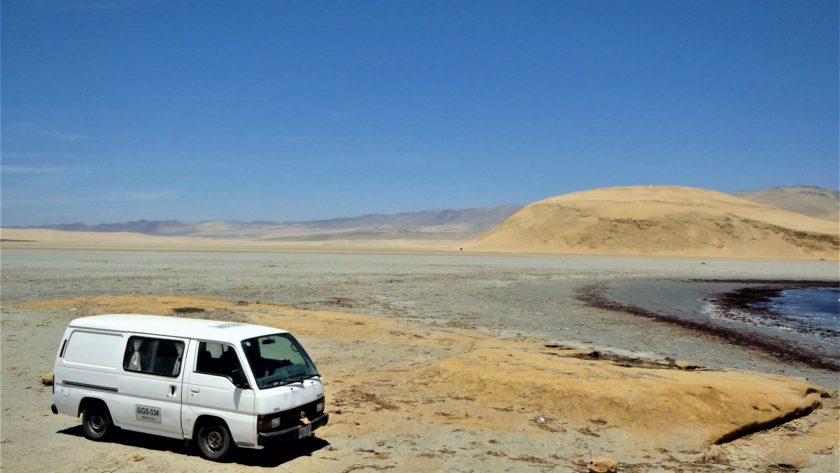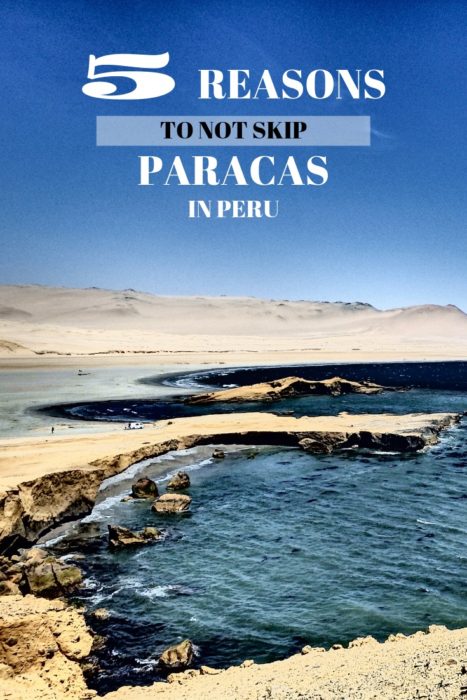The small fishing town of Paracas is found along Peru’s Pacific coast, around a three hour drive south of the capital, Lima.
It may not win any awards for Peru’s prettiest town but what it does have is rugged desert cliffs, tens of thousands of birds and stunning sunsets.
We think this unimposing coastal town is seriously underrated and would encourage any budget backpacker travelling south of Lima to make a stop here.
This is why we have put together our top 5 reasons not to skip Paracas in Peru.
#1 Isla Ballestas
Reason number one is sure to get budget travellers on board. Isla Ballestas, also known as ‘the poor man’s Galapagos’. As it’s nickname suggests, it is a much cheaper alternative to view some of the incredible wildlife you wouldn’t otherwise find outside of Ecuador’s famous archipelago.
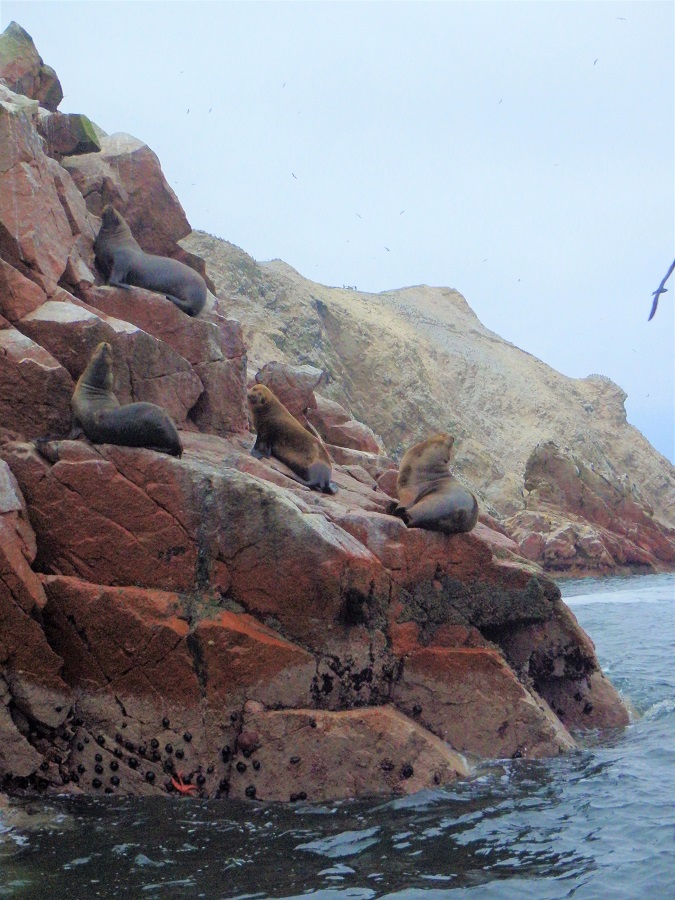
To visit the islands, travellers will need to join a boat tour to get there (note that you never actually set foot on the islands).
Find a tour is a relatively easy task as there are lots of boats that take visitors out on a daily basis. The trick is making sure you get a decent price.
We checked out a few local operators and were pleasantly surprised to find that the cheapest option was directly through our hostel. It ended up being 35 soles ($11 USD) each for a 2 hour boat ride, which included the national park fee also.
Tip: Aside from finding a good price, we recommend booking on a trip that leaves early as the dock can get pretty busy. Even at 8am it took 45 minutes to set off.
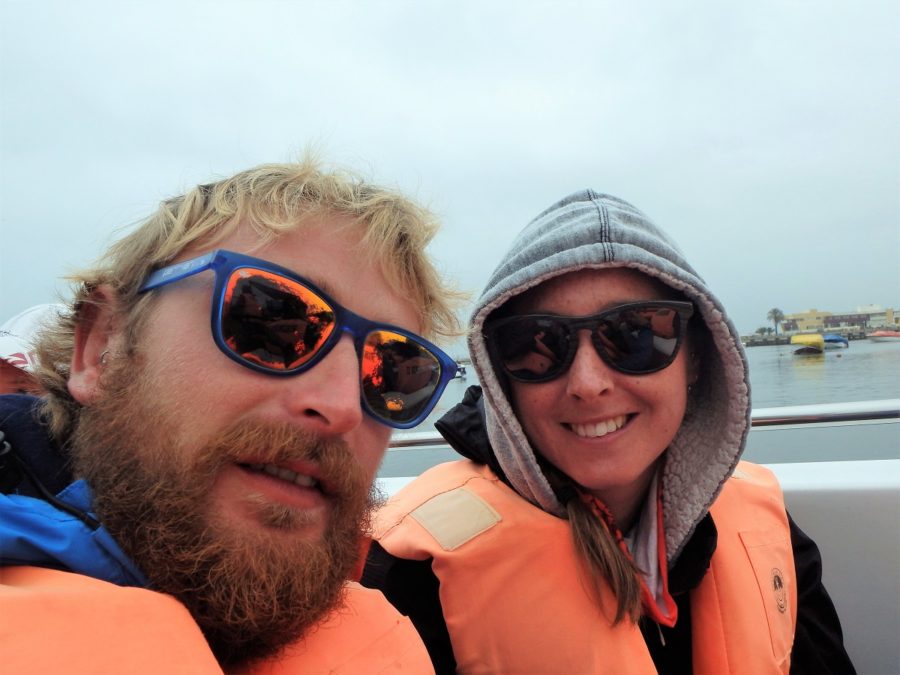
From the dock, it takes about 20+ minutes to travel the 10 or so kilometers to the islands. We were pumped at spotting a dolphin on route almost straight away!
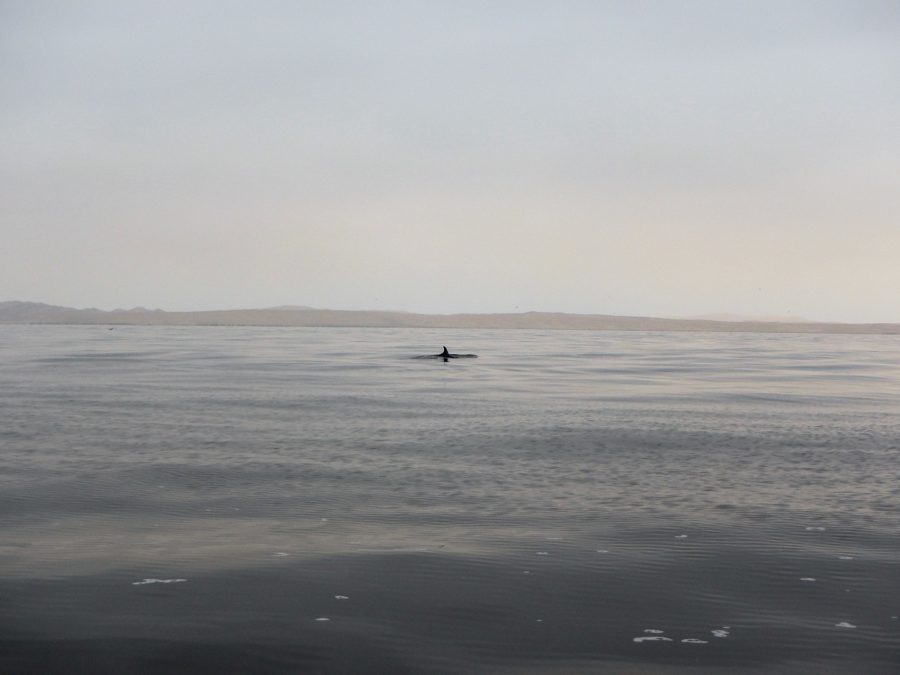
So many birds
When we arrived and began slowly cruising beside the rocks we saw hundreds of noisy sea lions and easily the most birds we have ever seen in one place!
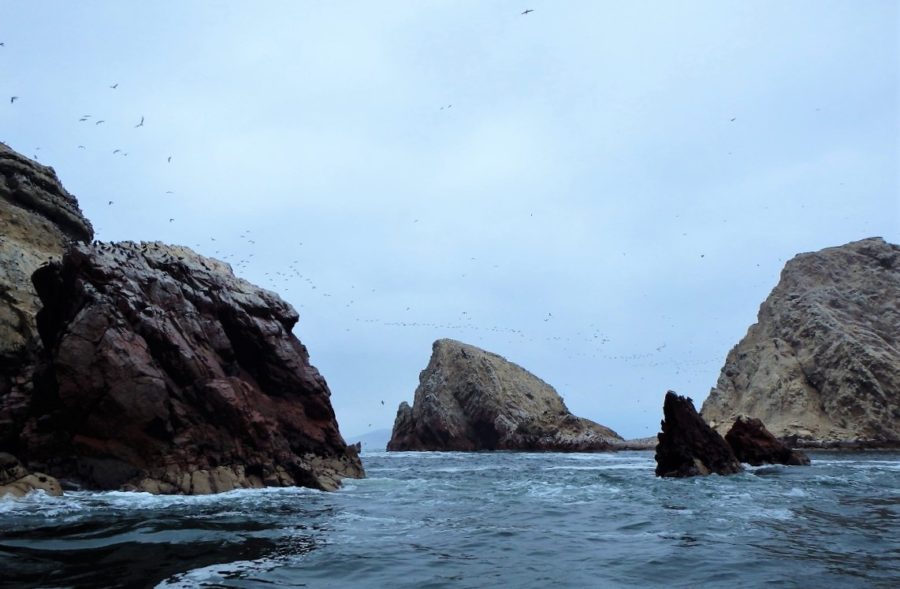
Apparently there are over 250 species of birds here which use these remote islands to breed. The locals used to collect and export guano ( Bird poo! ) here before the reserve became protected.
The sheer spectacle of so many birds was mind-blowing, however there was one species in particular that we were most excited to see… penguins!
On top of everything else, a small flock of Humboldt penguins waddling down the rocks to the water was like the cherry on top for us! And it made up for us not seeing any penguins in the Galapagos 🙂
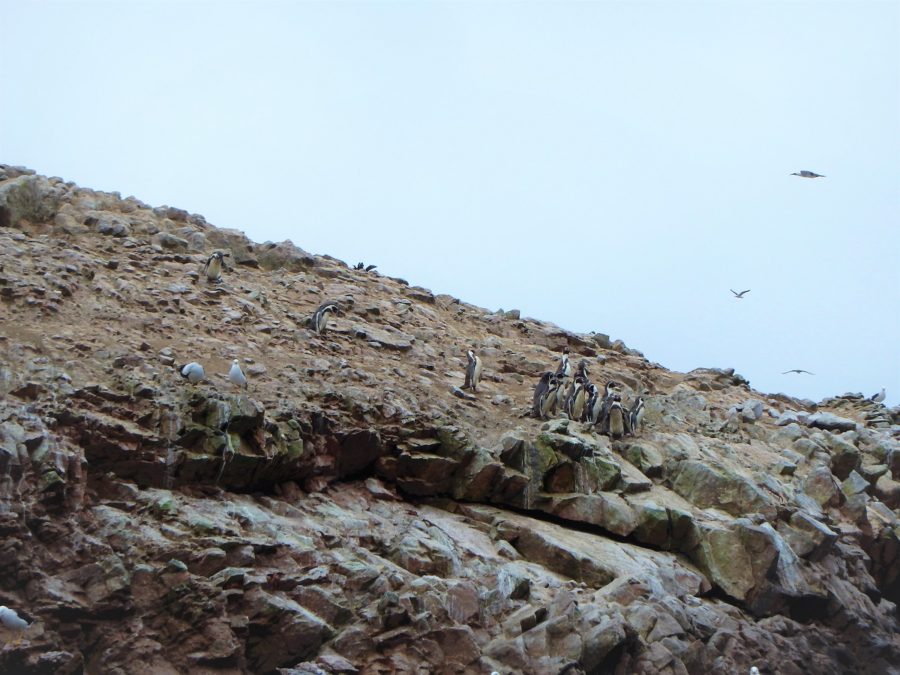
While the wildlife is beyond awesome and definitely what travellers come here for, the islands themselves are also pretty cool.
Shaped by strong winds and crashing waves, the rocks have been weathered to form numerous caverns, caves and archways.

One last impressive structure we visited on route back to the dock was La Candelabra.
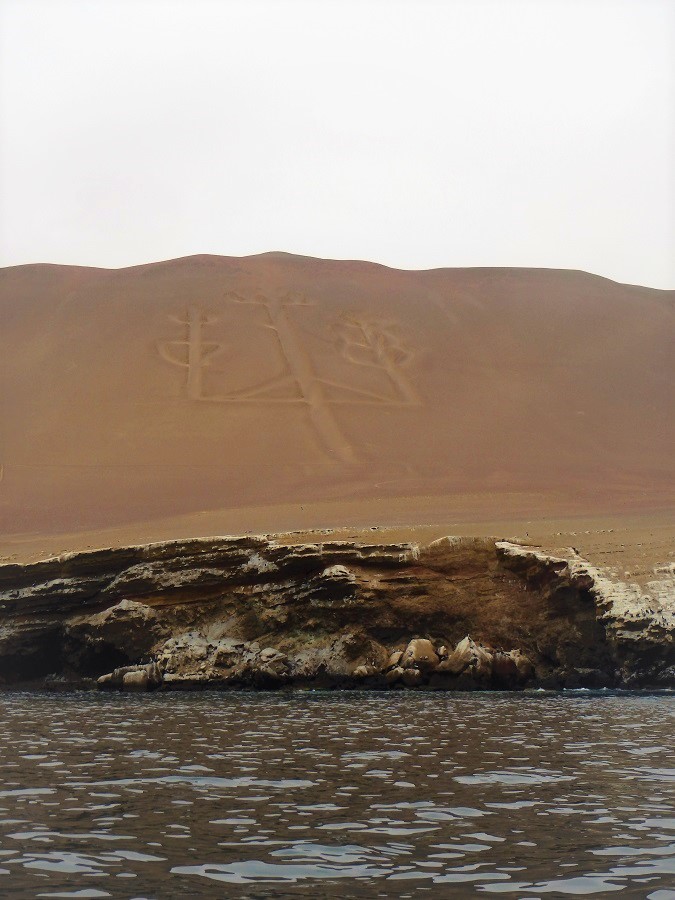
This puzzling geoglyph is an impressive 595ft tall and can be seen for up to 12 miles at sea! There are several theories as to it’s purpose and origin, however this mystery remains unknown.
#2 Paracas National Reserve
A huge protected area, Paracas National Reserve spans a total area of around 3,350km²!
65% of this covers the local marine habitat, which includes Isla Ballestas, and the other 35% over it’s arid, desert landscape (which includes a number of significant archaeological sites).
On top of visiting the aforementioned islands, travellers to Paracas have to visit the desert shores of the reserve from land. It is simply stunning!

There are several ways to reach the reserve from town.
Those with a bit more cash might opt to chose a bus or ATV tour ($20-45 USD). Both bikes and ATVs can be rented independently for those wanting to explore at their own pace.
We would have done the latter and likely rented ATVs but we got super lucky and ended up hitching a ride with other backpackers we had travelled with from Lima.
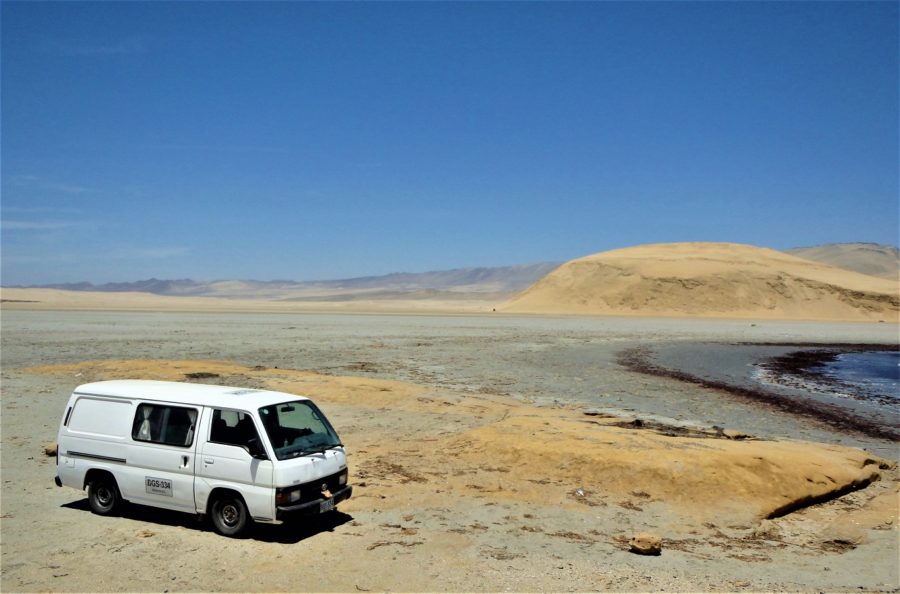
The only fee we had to cover was the 10 soles ($4USD) entry each (as well as some groceries for a scenic picnic, of course).
While we may have struggled with navigating our way around the reserve, some popular sights to aim for include the Museo Paracas, Playa Roja (Red Beach), La Mina and Lagunillas.
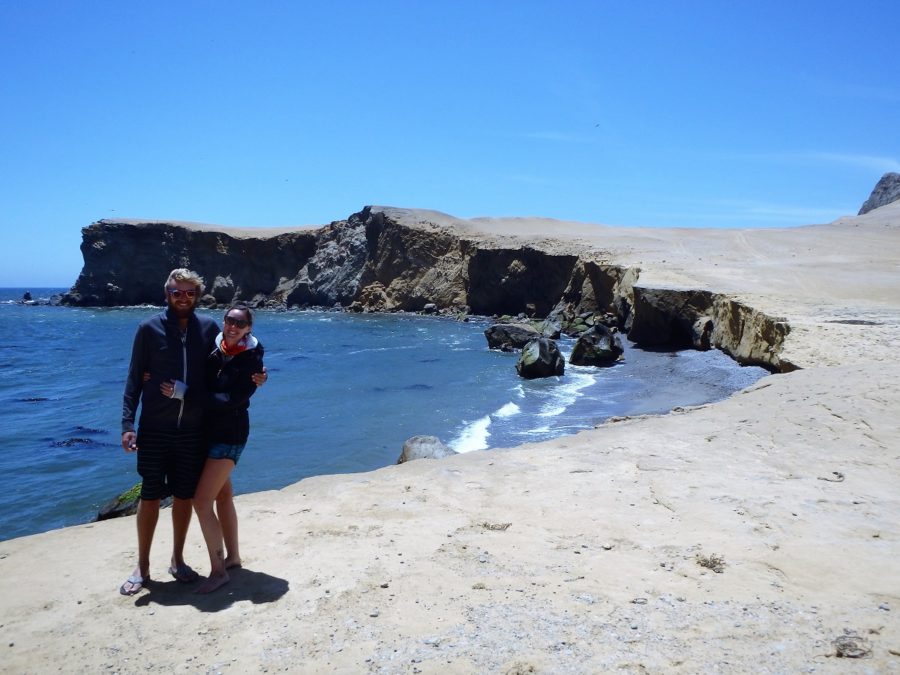
Tip: Visit Isla Ballestas and the reserve by land on the same day to save on entry fees. We visited each on separate days and so had to pay the entry fee twice.
#3 Kiteboarding
We had never thought kiteboarding would be an option when backpacking through Peru, not on our budget anyway!
Now don’t get us wrong, it’s still not what we would call ‘cheap’ BUT relatively, it was a steal compared to the usual going rate. Literally, it was less than half of what you might expect to pay in the states or the UK.
Once Rhys discovered that Paracas was a haven for kiteboarders, we had to check out a local school and enquire on prices. We were aiming for the popular beach south of town when we passed by Kite Club Paracas.
We were wowed by their sleek, modern headquarters which even included a large pool set-up for practicing board skills. Needless to say, we were in.
Learning the basics
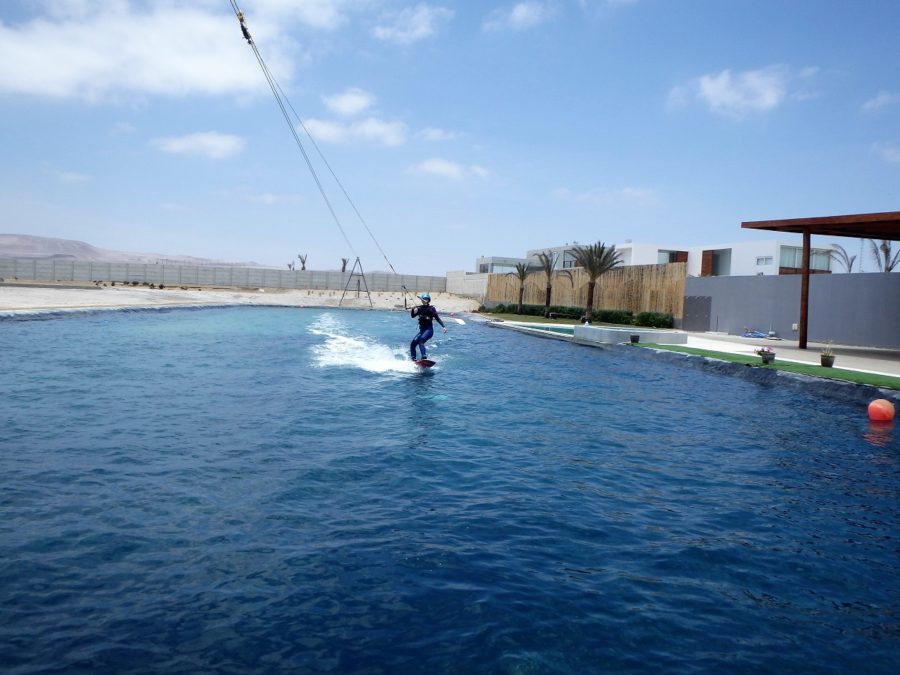
After fine-tuning our board skills it was off to the beach.
Having boarded before, Rhys was straight in the water. I first had to master my kite-flying skills. It’s safe to say I am not a natural, ha!
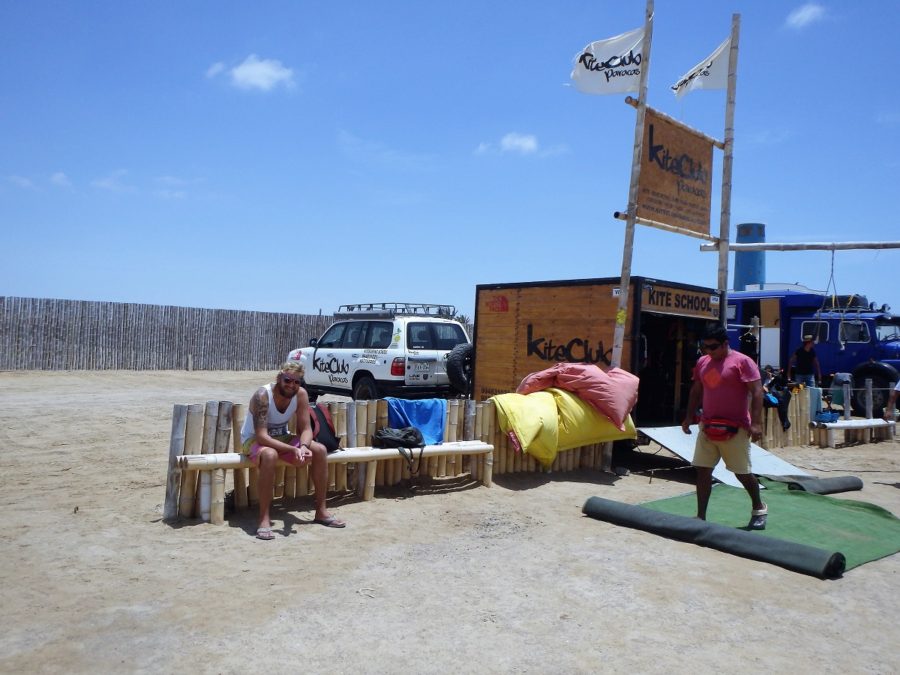
On day two it was time to combine my newly learnt skills and take to the water! After overcoming the slight issue of no wind that is.
Incredibly our instructor had a ‘Plan B’ which saw us relocate to Laguna Grande within the nature reserve (and yes, we had to pay the park entry fee for a third time!!).
Testing our skills
On arrival Rhys was straight out there and doing amazingly well (not trying to sound too surprised there). I, on the other hand, was still a bit clueless.
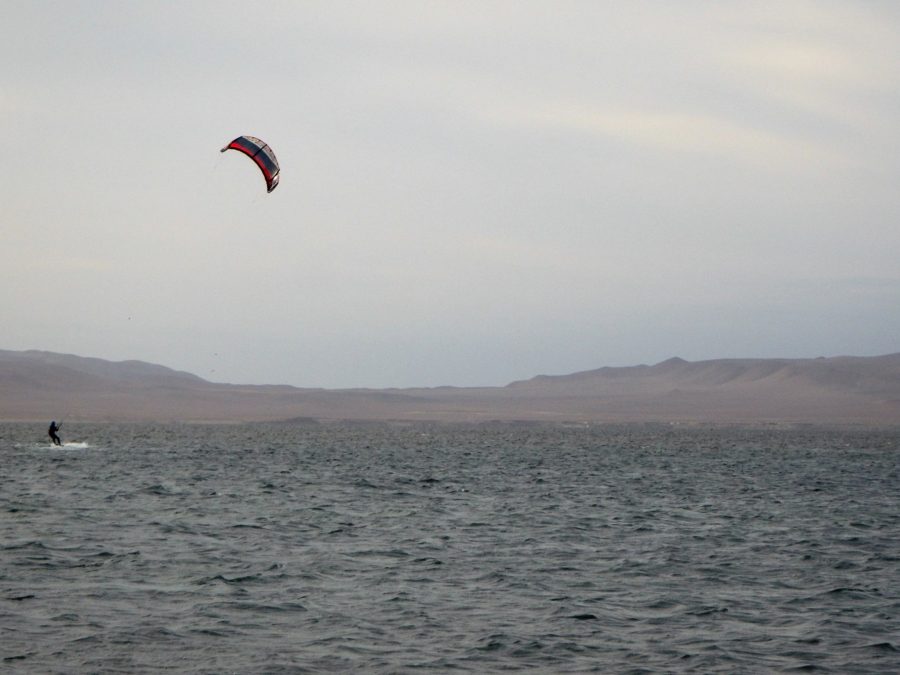
I upgraded from my small practice kite on the beach to what seemed like an enormous 8 metre kite.
I won’t lie, I was slightly terrified. But after face-planting the water numerous times, being dragged through it like a rag doll and swallowing copious amounts of it, it strangely got easier to deal with.
Despite the steep learning curve, it was honestly so much fun.
Especially as I eventually managed an exhilarating 20+ second ride as a reward for my endurance! Minutes before I then smashed my kite into the shore and split it, of course. Maybe I shouldn’t kite board…
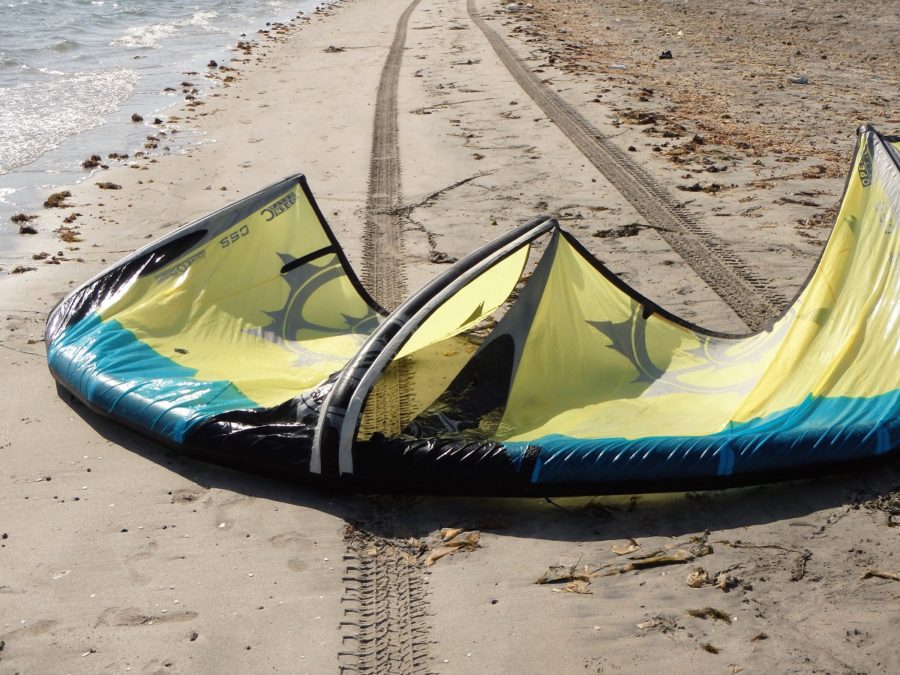
I genuinely think our only regret was not being able to stay longer and have more lessons.
In total I paid $200 USD for two 3.5-hour lessons; this works out to less than $30 per hour and included equipment! It was supposed to be for a semi-private lesson however my second day was almost exclusively private.
Rhys paid just $140 USD for both days. This also was meant to cover just rentals but he did receive quite a bit of instruction, albeit in Spanish.
As well as the (relatively) cheap cost, our instructor Jose and his team were all awesome. We would definitely recommend them!
#4 Fresh, local seafood
Another reason to not skip Paracas in Peru is the abundance of fresh local seafood here (it is a fishing town after all).
Daily catches are served up at a number of Cevicherías all packed into a small space along the water front. It’s hard to know which one to chose!
Finding a modest looking restaurant at the south end of El Chaco, Rhys and I shared the menu del dia. Large portions of ceviche and arroz con mariscos (seafood rice) cost us just 15 soles ($4.50 USD). A bargain for budget backpackers like ourselves.
And we both agreed that the rustic-looking ceviche we had here was even better than what we had enjoyed in a more upscale spot in Lima!
Over our few days in Paracas we enjoyed plenty more seafood in the form of mariscos chicharron mixto (various fried seafood) and fish wontons. Of course we still ate lomo soltado too because it’s the best thing ever, even if not local seafood.
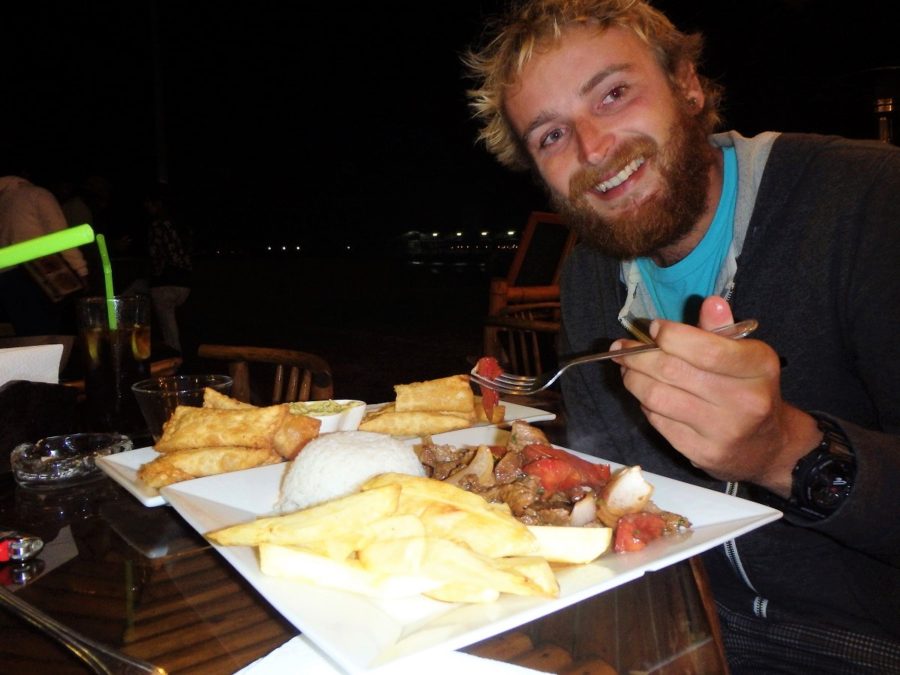
A word of advice when wandering for a bite to eat: we swear none of the bars accept cards despite having Visa or Mastercard stickers in their windows. It was bizarre!
Secondly, many restaurants here seemed to have picture menus. While not the first time we’ve seen picture-type menus, what we thought was strange, and comical, was that the images looked nothing like what was served!
If it tastes good, who cares though, right?
#5 Chilcano maracuya
The walkway that runs the length of the town’s waterfront (El Chaco) is adorned with bars and restaurants. Naturally, it’s a great place to head to enjoy the sunsets.
Even better is that the majority of these bars offer some form of happy hour special. A winner for all travellers (no just us budgeting backpackers).
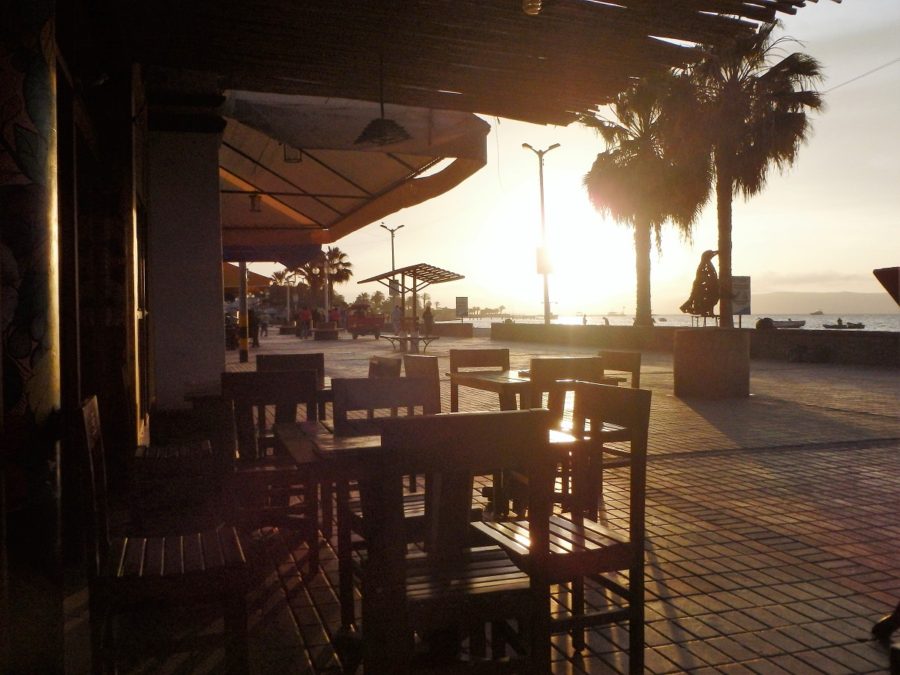
Luckily it was our first evening in Paracas when we discovered what might just be our favourite drink in the whole of South America: chilcano maracuya. This passion fruit-flavoured Pisco cocktail is absolutely heavenly!
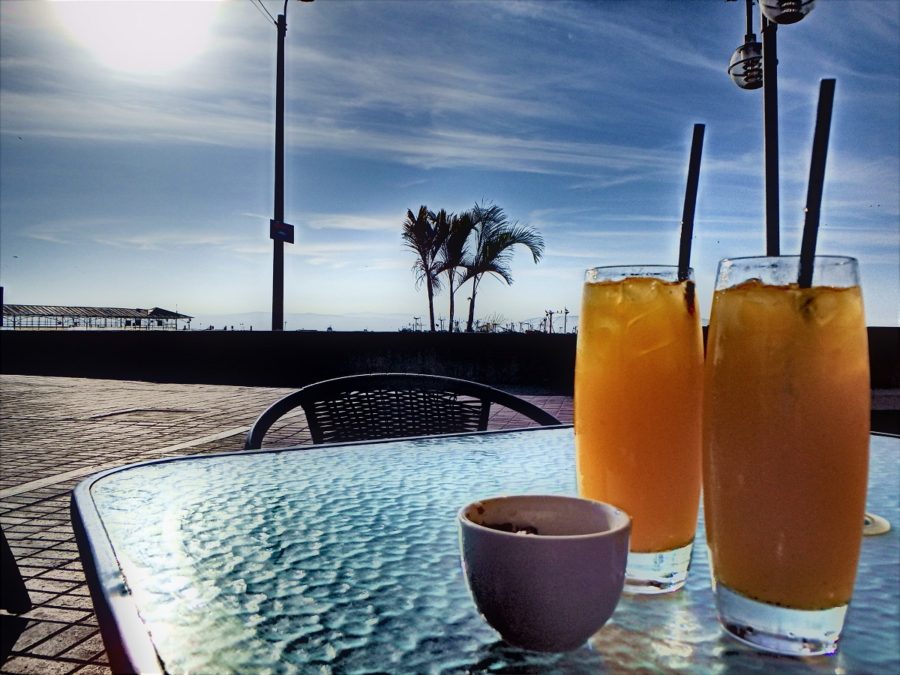
An ice-cold chilcano teamed with some crunchy corn and a beautiful sunset is nothing short of perfection to us.
We highly recommend fellow travellers to hunt down this drink in Paracas. Along with the other things on our list, it is not to be missed 🙂
Where to stay in Paracas
Given it’s small size, there is a limited selection of hostels in Paracas. The good news is, their pretty cheap.
We went with Icthus Paracas Backpackers as it is right in the town center and cost us just $17 USD for a private room. It was a literally a box of a room with just a bed in it but no complaints from us for that price!
The toilets and showers are okay and there’s a communal foyer where travellers can mingle and unwind. We were treated to some pretty awesome guitar playing and singing which is always welcome.
My only real gripe with this hostel is that the cleaners would take over the kitchen in the morning and, ironically, make a right mess just as everyone was getting up to make their own breakfast.
For backpackers willing to spend a little more, Kokopelli is a good choice and has great reviews. It’s also in town and even boasts a pool! Dorm beds cost around $10 USD and privates around $35 USD.
If you are making your way to Paracas specifically for kiteboarding and you have a bit more money to spend, then Bamboo Paracas Resort with Kangaroo Kite Surfing School on-site might appeal.
How to get to Paracas
We only ended up visiting Paracas thanks to another backpacker at our hostel in Lima. Travelling South America in his van, he offered us a ride with him down to Paracas. Why not, aye?
The journey is supposed to take just over 3 hours. It took us over 4 and was certainly a journey we won’t forget anytime soon.
Most of the journey is through Peru’s desert and so civilisation along the route is pretty scarce. Not so bad, unless the vehicle your in has a broken fuel gauge and then runs out of petrol before making the next station…
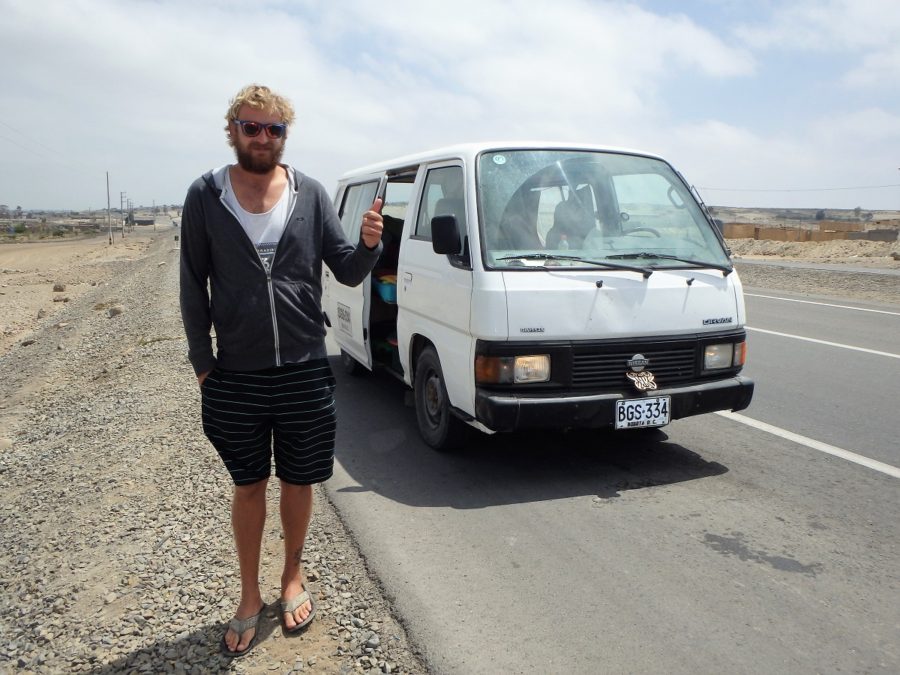
Feeling so vulnerable was a little nerve-wracking. Luckily the four of us pulled together and 45 minutes later sourced a gallon of fuel which got us to Pisco. Phew!
If this (for some strange reason) doesn’t sound up your street, then a bus is your best option to reach Paracas.
Buses between Lima and Paracas cost around $7 USD. If you are heading north and coming from Ica or Huacachina then a bus is around $2 USD for the 1.5 hour journey.
An alternative to the standard, independent bus companies is booking with Peru Hop which follows the ‘gringo trail’ through Peru. It’s quite a popular option with backpackers but isn’t quite as budget-friendly.
Head to Paracas!
For travellers looking to visit Lima or make their way through Peru, we hope we’ve convinced you with our top 5 reasons not to skip Paracas.
Like us, we think this humble fishing town will make a memorable addition to your South American travels and make you glad you stopped by.

